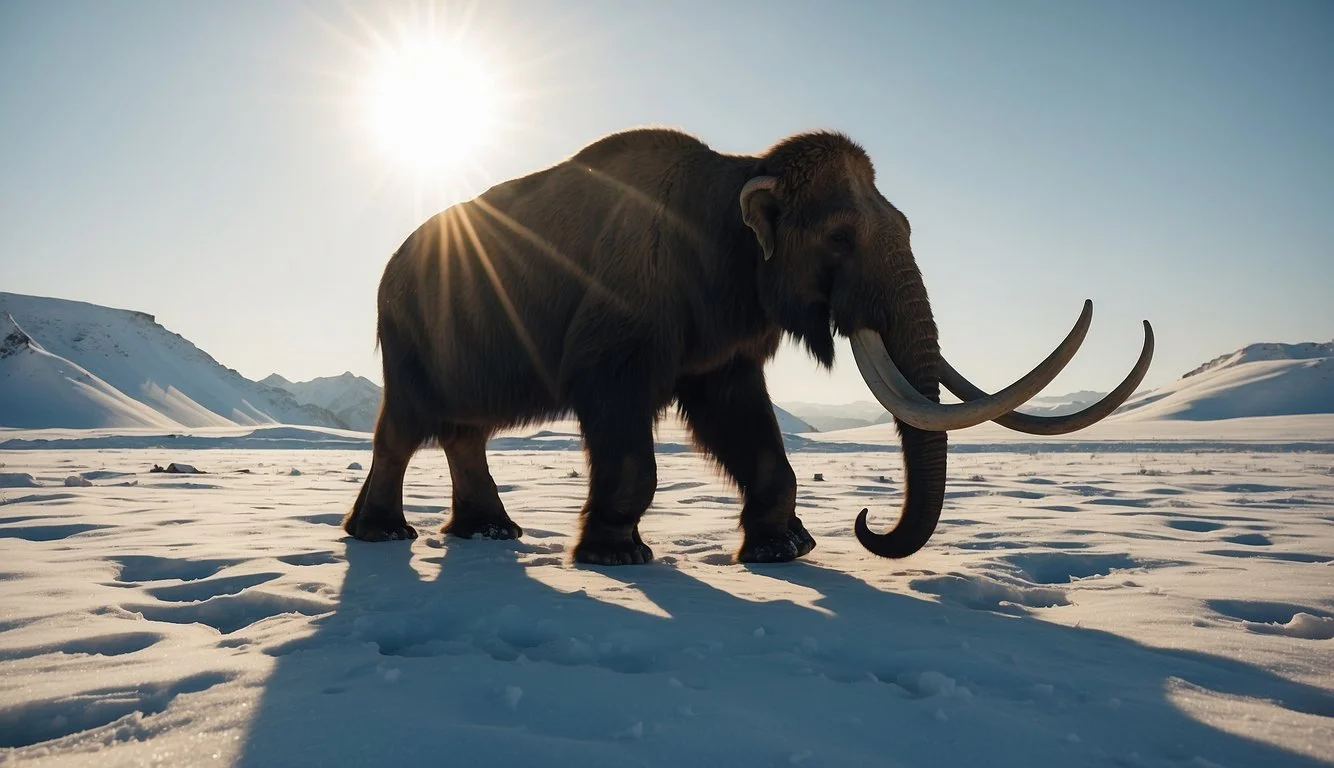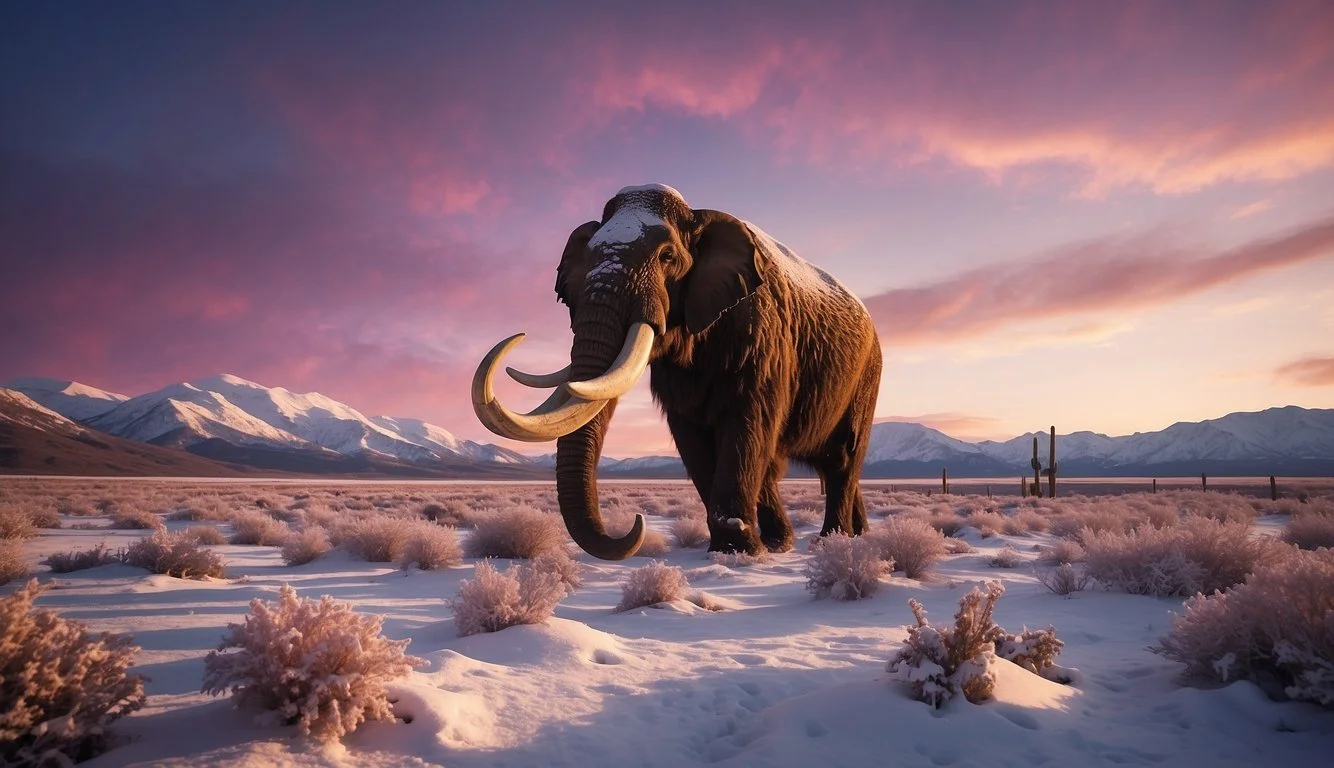Documentary Review: Attenborough and the Mammoth Graveyard (2021)
Unearthing Prehistoric Secrets
Sir David Attenborough's "Attenborough and the Mammoth Graveyard" brings viewers face-to-face with a remarkable discovery in British archaeology. In this documentary, Attenborough collaborates with experts to explore the biggest mammoth graveyard uncovered in the UK in the past two decades.
As he delves into the excavation site, viewers are treated to a detailed look at fossils and the rich history they unveil. This documentary stands out for its clear explanations and engaging infographics, providing a gateway to understanding prehistory.
Attenborough's passion for natural history is palpable, making even the most technical aspects of the dig accessible and fascinating. This film is a must-watch for anyone intrigued by the ancient past and the intricacies of archaeological endeavors.
Contextual Background
David Attenborough's involvement in Attenborough and the Mammoth Graveyard adds significant gravitas to this exploration of prehistoric life. This documentary fits within a rich tradition of prehistoric documentaries and offers viewers a captivating look at a groundbreaking archaeological dig.
David Attenborough's Legacy
Sir David Attenborough is a highly respected broadcaster and natural historian. His work spans numerous nature documentaries, making him a household name synonymous with wildlife and environmental education. With a career dating back to the 1950s, Attenborough's unique narrative style and engaging presentation have captivated audiences worldwide. His involvement in this documentary brings a wealth of knowledge and credibility, ensuring that viewers receive an authoritative and insightful exploration of the subject matter.
Prehistoric Documentaries
Prehistoric documentaries offer a unique window into the distant past, blending scientific findings with accessible storytelling. These films highlight the challenges of archaeological discoveries and the complexities of interpreting ancient ecosystems. They often feature in-depth interviews with experts, vivid reconstructions, and graphics that bring extinct species to life. Documentaries like Attenborough and the Mammoth Graveyard provide educational content that sparks curiosity about early life on Earth and the evolution of species. They serve an important role in broadening public interest and understanding of paleontological research.
Film Synopsis
Attenborough and the Mammoth Graveyard follows an extraordinary excavation near Swindon, where a variety of mammoth remains were uncovered. The documentary delves into the discovery, featuring David Attenborough alongside archaeologists as they investigate whether Neanderthals might have hunted these Ice Age giants. The film includes detailed explanations from experts, showcasing the significance of the find, which includes bones from at least five different mammoths. By blending on-site footage with interviews and infographics, the documentary provides a comprehensive overview of prehistoric life and the scientific techniques used to unearth and study these ancient remains.
Documentary Content
In "Attenborough and the Mammoth Graveyard," viewers are presented with a meticulous archaeological dig that unearths significant findings related to mammoth remains. The documentary offers detailed insights into the discovery, the scientific relevance of the findings, and the behavior and ecology of mammoths in the Ice Age.
Discovery of the Mammoth Graveyard
The excavation site, located near Swindon, revealed a remarkable array of mammoth bones. Archaeologists and paleontologists worked collaboratively to uncover what is considered Britain's most significant mammoth discovery in nearly two decades.
Key figures involved in the dig, including Sir David Attenborough, offered hands-on assistance and shared their knowledge throughout the exploration process.
The mammoth bones were found alongside Neanderthal tools, prompting intriguing questions about human and animal interactions during the Ice Age.
Scientific Significance
The discovery provides valuable data about Ice Age fauna and the environment. Detailed analysis of the fossils, including isotopic studies, helps scientists understand the climate conditions and dietary patterns of mammoths.
Researchers also examined the tools found at the site. These artifacts suggest that Neanderthals might have interacted with or hunted these massive creatures, offering a glimpse into human-mammoth relations.
Infographics in the documentary explained the various species and periods, making complex scientific information accessible to the audience.
Mammoth Behavior and Ecology
"Mammoth Graveyard" delves into the daily lives of mammoths, highlighting their social structures, migratory behaviors, and survival strategies. Experts explained how these large herbivores adapted to the harsh climates of the Ice Age.
Viewers learned about the mammoths’ diet, which largely consisted of grasses and other vegetation. The analysis of dental wear patterns supported these conclusions.
The documentary also showcased computer-generated imagery (CGI) to reconstruct the habitat and visualize how these magnificent creatures might have lived, moved, and interacted within their environment.
Production Quality
The documentary "Attenborough and the Mammoth Graveyard" excels in its production quality, which enhances the viewer's experience through meticulous cinematography, a captivating soundtrack, and high-quality visual effects.
Cinematography
The cinematography skillfully captures the essence of the archaeological dig. Crisp, high-definition shots bring the mammoth graveyard to life.
Wide-angle shots provide a comprehensive view of the excavation site, illustrating the scale of the project.
Close-ups highlight the delicate work undertaken by the archaeologists, emphasizing the significance of each discovery. By switching between panoramic views and detailed close-ups, the documentary maintains visual interest and clarity.
Soundtrack and Audio
The soundtrack is subtle yet effective, reinforcing the emotional impact of the discoveries.
Ambient sounds from the excavation site are interwoven with a minimalist musical score, creating an immersive atmosphere. This approach allows the natural sounds of the dig to shine while supporting the narration.
Clear and well-balanced audio ensures that expert explanations and Sir David Attenborough’s narration are easily understood, enhancing the educational aspect.
Visual Effects and Animations
Visual effects and animations play a crucial role in explaining complex concepts and bringing prehistoric epochs to life.
Infographics elucidate the types of species found and their historical contexts. These visual aids are clear and unobtrusive, aiding comprehension without distracting from the live-action footage.
Animations reconstruct the prehistoric environment, offering viewers a glimpse into the flora and fauna of the era. These reconstructions are scientifically accurate and seamlessly integrated into the narrative.
Critical Analysis
"Attenborough and the Mammoth Graveyard" provides valuable insights through expert interviews, compelling storytelling techniques, educational content, and ethical considerations. Each element plays a crucial role in enhancing viewer engagement and comprehension.
Expert Interviews
The documentary features interviews with specialists such as paleontologists and archaeologists, who provide in-depth analysis. David Attenborough himself offers a knowledgeable perspective that adds credibility.
Experts discuss the significance of the findings, such as the variety of mammoth remains uncovered. These interviews are well-integrated into the narrative, making complex topics accessible. Visual aids like infographics are used to clarify technical details, ensuring the audience grasps the importance of each discovery.
Storytelling Techniques
Narrative strategies in the documentary ensure it remains engaging. It starts with a compelling hook: the unexpected discovery of mammoth fossils. The story then unfolds through a mix of personal anecdotes from the fossil hunters and factual updates from the excavation site.
Visual storytelling is complemented by high-quality cinematography and animatronics, which reconstruct prehistoric scenes. This blend of story arcs and immersive visuals helps maintain viewer interest from start to finish.
Educational Value
This documentary excels in its educational content. It provides a thorough look at the Pleistocene epoch, explaining the environment in which mammoths thrived. By showcasing expert explanations and fossil evidence, it offers a detailed understanding of prehistoric life.
Moreover, it educates viewers on archaeological methods, from excavation to analysis, making the scientific process transparent. This enhances the documentary's role as an educational tool, suitable for various audiences, including students and history enthusiasts.
Ethical Considerations
"Attenborough and the Mammoth Graveyard" addresses ethical issues in archaeology and paleontology. The film emphasizes the importance of responsible excavation practices to preserve sites for further research.
It also highlights the ethical duty to accurately represent historical findings, avoiding sensationalism. The collaboration with local communities ensures that the excavation respects cultural sensitivities. These ethical considerations create a model for future archaeological documentaries.
Viewer Reception
"Attenborough and the Mammoth Graveyard" has garnered significant attention from both general audiences and critics. Reception highlights its blend of engaging visuals and educational content.
Audience Ratings
General viewers have responded positively to the documentary. IMDb lists high ratings and numerous glowing reviews, emphasizing approachable storytelling and visually compelling infographics. Noteworthy mentions often highlight David Attenborough's compelling narration and the detailed archaeological insights provided.
Feedback in online forums and social media showcases widespread admiration for the film’s educational value. The enthusiastic responses often describe the documentary as a fascinating look into prehistory, appealing to both casual viewers and enthusiasts of natural history.
Critical Reviews
Critics have also praised the documentary. Reviews frequently commend the film for its thorough research and clear presentation of complex archaeological findings. For example, a review from the BBC highlights the film’s ability to balance scientific information with engaging storytelling.
Critic assessments also appreciate how the documentary features specialists who explain the significance of the site in an understandable manner. Among these reviews, the intersection of Attenborough's narration with genuinely new archaeological data stands out as a major selling point, contributing to its critical acclaim.
Conclusion
"Attenborough and the Mammoth Graveyard" stands out for its meticulous exploration of a major archaeological find.
Viewers will appreciate the clear explanations provided by specialists, making complex pre-historic details accessible. The usage of infographics helps visualize different species and periods, enhancing the overall understanding.
The film succeeds in blending scientific rigor with engaging visuals, thanks to the magnetic presence of Sir David Attenborough. His hands-on involvement in the excavation brings a personal touch to the narrative.
The documentary not only focuses on mammoth remains but also on a diverse range of flora and fauna unearthed at the site. This adds depth and context to the mammoth discoveries.
Attenborough's interaction with the team on-site gives viewers an insight into the archaeological process, from initial digs to detailed analysis.
The atmosphere created by the film is both informative and inviting, making it suitable for a wide audience with varied interests in pre-history.
"Attenborough and the Mammoth Graveyard" offers a potent blend of education and entertainment, making it a noteworthy addition to the field of documentary films.


